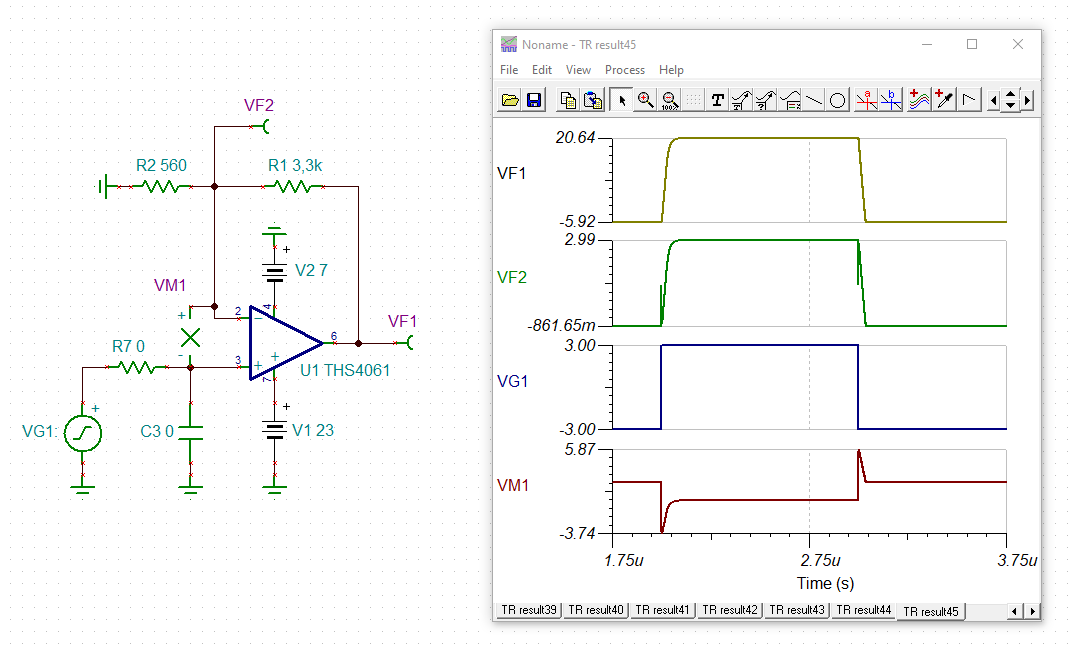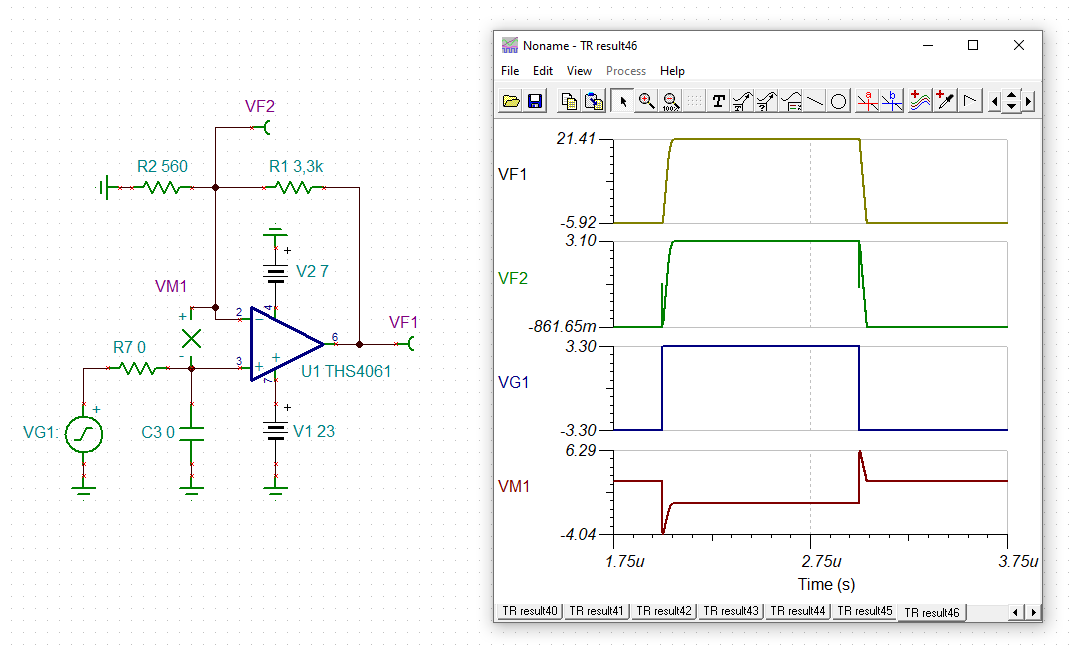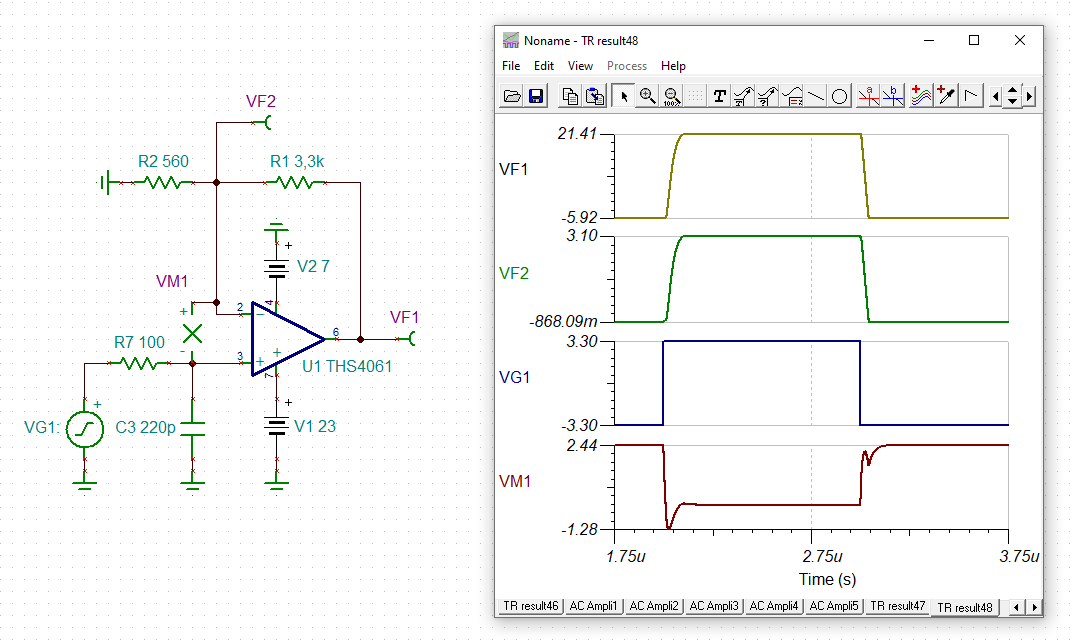Other Parts Discussed in Thread: THS4631, THS4601, OPA698, OPA699
Hello,
After an input override, the output signal of the THS4061 is seriously wrong for up to approx. 600ns.
This behaviour is not reproduced by TI-PSpice (see measurements).
Is there an extra setting for this in TI-PSpice?
Or is it not possible to see overriding/clipping effects with PSpice?
Thank you for your reply.
Regards, Karl




